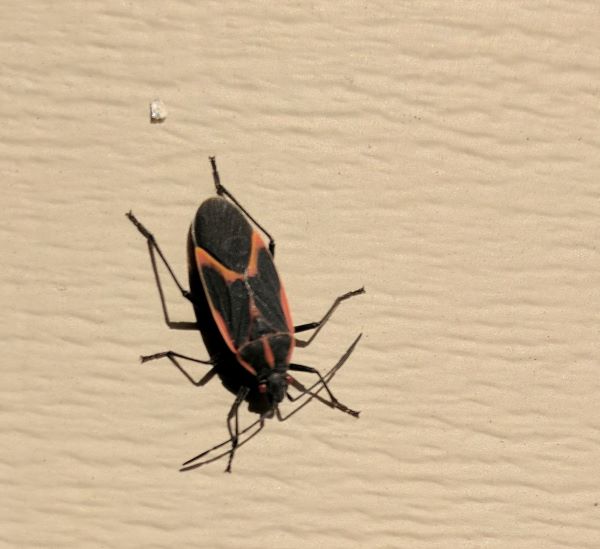FOR IMMEDIATE RELEASE
URBANA, Ill. – As the weather gets colder and the days get shorter, we often start seeing uninvited insect guests in our homes, according to University of Illinois Extension educator Ken Johnson.
Boxelder bugs are commonly found trying to enter houses, especially if there’s a boxelder tree nearby. These insects are about one-half inch long and black with orange or red markings. During the spring and summer, the adults will feed on leaves and seeds of boxelder trees (and occasionally maple and ash trees). When temperatures begin to cool in the fall, they will begin to seek out warmer areas.
“They are most often attracted to buildings with large southern or western exposures, because they are warmer than the surrounding area,” Johnson says. As they aggregate on a building, they will find cracks and other spaces to squeeze into, occasionally making their way indoors and ending up in walls and attics until warm weather returns.
Multicolored Asian lady beetles are also commonly found attempting to make their way into homes. According to Johnson, these lady beetles were introduced into the United States to control aphids on pecan trees. Since their introduction, they have spread throughout the country. The beetles vary in color from yellow to reddish-orange and have anywhere from zero to 19 spots. They can often be distinguished from other lady beetles by the presence of an ‘M’ pattern near their head. In their native China, they will overwinter on tall cliffs. “Since we lack these in most parts of Illinois, they will instead use buildings to overwinter,” Johnson says.
The brown marmorated stink bug (BSMB), on the rise in Illinois, is the final home invader. This stink bug is native to Asia and was first discovered in the U.S. in the late 1990s in Pennsylvania. Since then, Johnson says, it has quickly spread throughout the country. Like the others, BMSBs will also congregate on buildings looking for somewhere to overwinter. But unlike boxelder bugs and multicolored Asian lady beetle, these insects are more than a nuisance. According to Johnson, “They will feed on a wide variety of tree fruits, vegetables, agricultural crops, and ornamentals and can cause a significant amount of damage.”
They have the typical ‘shield’ shape of stink bugs. And, as their name implies, BSMBs are brown and marmorated (mottled). There are a few characteristics that can be used to differentiate them from our native stink bugs: the antenna are striped with white bands, they have smooth “shoulders,” and they have black and white triangular patterns on their abdomens. Several other insects are commonly confused with BMSBs. Johnson recommends contacting your local Extension office if you are unsure.
For all of these insects, the best management strategy for keeping them out of your home is exclusion. Johnson says, “Make sure windows and doors fit tight and window screens are free from holes. Seal any openings, cracks, and crevices around the foundation, pipes, wires, and chimneys. Finally, make sure siding, eaves, and soffits are in good condition.”
Insecticides can be applied to the perimeter of buildings, but since these insects are rather mobile, it can be difficult to get good control of them. Once they enter your home, they can be vacuumed up and placed in soapy water and disposed of. Using insecticides to control these insects indoors is generally not recommended.
News Source: Ken Johnson, 217-243-7424, kjohnso@illinois.edu
